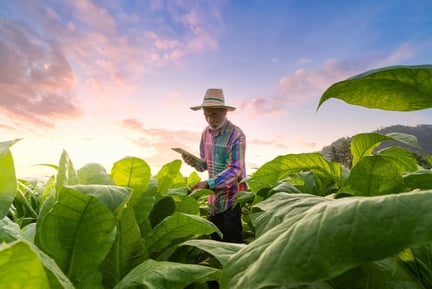Child labour risk is a key differentiator between the best and worst performing countries for Environmental, Social and Governance (ESG) supply chain risk, according to a biannual report from LRQA.
Child labour risk is a key differentiator between the best and worst performing countries for Environmental, Social and Governance (ESG) supply chain risk, according to a biannual report from LRQA.
With an increasing number of major conflicts displacing populations, however, forced labour and human rights violations for migrant workers have also been flagged as a growing cause for concern in every nation. Even some of the lowest risk countries demonstrated a deterioration in scores for child labour, transparency, working hours and policy in 2023.
The ratings have been compiled using data from 25,000 supply chain audits per year in more than 100 regions across 20 key sectors collated in EiQ, LRQA's supply chain intelligence platform. Regions were evaluated against more than 38 critical metrics aggregated under five categories: labour, health and safety, environment, business ethics, and management systems.
Kevin Franklin, Managing Director of Advisory (ESG) at LRQA, said:
“We are operating in a time where immense change is the only constant. The ESG trends we see on the ground in supply chains show direct connections to global crises like the Russia-Ukraine and Israel-Hamas conflicts. These events bring unforeseen and cascading impacts on business operations globally and further intensify human rights violations across a range of sectors.
The complexity of due diligence regulations and the lack of alignment in risk assessment and disclosure standards continue to muddy the waters of transparent and credible reporting
“It is important to remember that overall lower risk does not necessarily mean no risk. The rising complexity of due diligence regulations and the lack of alignment in risk assessment and disclosure standards continue to muddy the waters of transparent and credible reporting.”
“For businesses operating with partners worldwide, the directive is clear: proactive risk management with suppliers requires forward-thinking, to expand knowledge of your supply chain's ESG risk landscape, and thorough, transparent and robust data, to monitor regularly for present and emerging challenges.”
Pakistan is the country at highest risk of Environmental, Social and Governance (ESG) supply chain violations in 2023. It is joined in the lower performers by other southeast Asian economies making textiles and electronics including Bangladesh, India, Cambodia and Vietnam.
Germany tops the list for lowest supply chain risk, alongside Japan, Taiwan and European agricultural and manufacturing nations Portugal and Spain.
The five highest risk sourcing countries were found to be:
- Pakistan
- Bangladesh
- India
- Cambodia
- Vietnam
The five lowest risk sourcing countries were found to be:
- Germany
- Japan
- Spain
- Portugal
- Taiwan
Highest risk: Pakistan
One of the world's largest producers and exporters of textiles and apparel, Pakistan has faced significant challenges related to child labour. Making up more than 60 percent of the country’s $25.3bn in exports in 2021, the country supplies textiles to major sourcing markets like the United States, United Kingdom, Germany, Netherlands and China.
The informal economy, including sectors like agriculture and small-scale industries, has often employed children in hazardous conditions. Efforts have been made to address this issue through legislation, but implementation has been a challenge. The United States Department of Labor's Bureau of International Labor Affairs (ILAB) found that Pakistan is one of 22 countries that does not have a minimum age for hazardous work that meets international standards. ILAB found in a 2022 investigation that children in Pakistan were subjected to the worst forms of child labour, including sexual exploitation and hazardous work, attributing these perpetual violations to lack of enforcement resources and corruption.
Lowest risk: Germany
In contrast Germany, known for its position in the automotive sector, has historically been considered a lower risk market, producing positive scores for many of its key indices. The country's manufacturers produce high-quality industrial machinery, equipment, and precision tools, contributing to the global supply chain for manufacturing and infrastructure development.
Child labour, risk for wage violations and high working hours all continued to show lower risk in Germany this year, and the country showed improvements in most indices under health and safety including fire safety, machine safety, and occupational safety. However, potential risks are emerging. Risk for migrant workers, forced labour and humane treatment all showed worsening scores this past year. Germany has been a hot spot for refugees from war-torn countries, as many Ukrainians fled there following Russia's invasion of Ukraine. Refugees are subject to labour exploitation, as desperation drives them into potentially inhumane working conditions.



